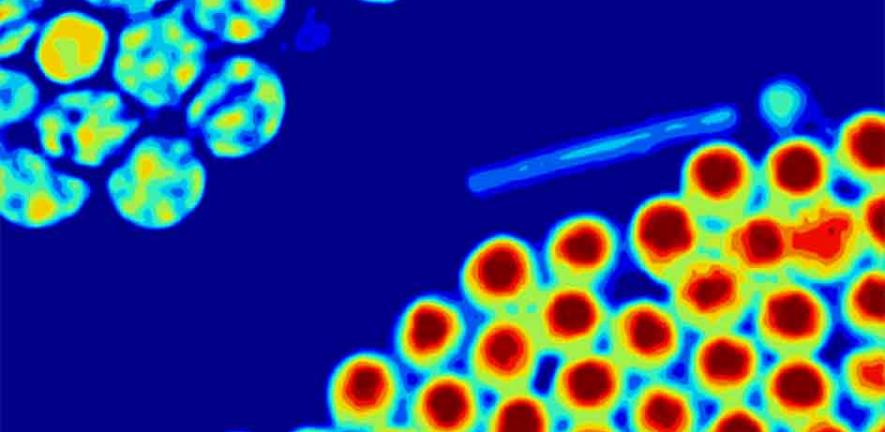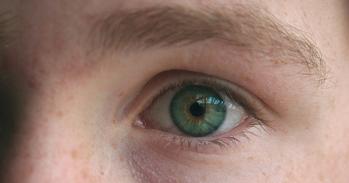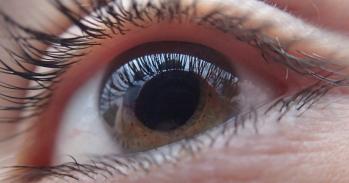
The night vision abilities of nocturnal animals such as mice is down to the unconventional way that DNA is packaged within the nuclei of specialised cells responsible for low light vision, say Cambridge University researchers.
The night vision abilities of nocturnal animals such as mice is down to the unconventional way that DNA is packaged within the nuclei of specialised cells responsible for low light vision, say Cambridge University researchers.
It took a great leap to realise that the structure of the nuclei deep within rod cells might have something to do with animals' behaviour at night versus during the day.
Working with scientists from the Ludwig-Maximilians University Munich and the Max Planck Institute for Brain Research in Frankfurt their research, published in today's (April 17) edition of the journal Cell, shows that a special DNA architecture turns the rod cell nuclei into millions of tiny, light-collecting lenses. These lenses are stacked in columns which improve light transmission through the nocturnal retina and maintain vision, even at very dim light conditions.
In normal non-dividing cells, DNA is typically packaged into chromatin, which arranges the DNA into a unique order where the more condensed DNA, heterochromatin, is located on the periphery, while the less dense euchromatin, which is where the genes are active, is found in the centre. This general pattern is almost universal and conserved over 500 million years in both single-celled and multicellular organisms.
It took a great leap to realize that the structure of the nuclei deep within rod cells might have something to do with animals' behaviour at night versus during the day. That's because biologists typically think of DNA and its packaging into chromatin in terms of its effect on gene activity. "We tried every other possible explanation," said Boris Joffe of Ludwig-Maximilians University Munich. "The idea that it had something to do with vision was a daring idea. People laughed at first."
So, when they found that the nuclei of mouse rod cells show essentially the opposite pattern, it was of great interest.
Interestingly, mice aren't born with these unusual rod cells. Rather, conventional chromatin in their rod cells is completely transformed over the animals' first few weeks into the inverted pattern, which coincides with the time when young mice start seeing.
The unconventional architecture found in mice is also present in other nocturnal animals, they found. Their conclusions were supported by data from 22 other species, where only nocturnal animals had the inverted pattern.
The correlation between the inverted nuclear architecture and night vision suggested that the unconventional pattern might have implications for vision. After all, nocturnal mammals see at light intensities a million times lower than those available during the day, and their rod photoreceptors are known to possess a light sensitivity down to the level of a few photons. This high sensitivity demands a large number of rod cells, which increases the thickness of the retinas' outer nuclear layer (ONL). The optimization of light transmission through the ONL could therefore provide crucial advantages for nocturnal vision.
Indeed, measurements of how individual nuclei taken from the rod cells of nocturnal animals, together with computer simulations of how these nuclei interact with light, show that they act as collecting lenses. In contrast, the rod nuclei of non-nocturnal animals scatter the light.
The importance of this special chromatin arrangement comes only when you consider the arrangement of nuclei into columns. Computer simulations indicate that columns of such nuclei like those found in nocturnal animals' retinas would channel light efficiently toward the light-sensing rod outer segments similar to optical fibres. Jochen Guck, from the Department of Physics said: "If each nuclei scattered light, it would be all over the place. The inversion in nocturnal animals makes sure that light is passed from one nucleus to the next. It is handed down so that it doesn't scatter."
The results show that despite the strong evolutionary conservation of the conventional pattern, nuclear architecture in rod cells was modified several times in the evolution of mammals.
Using the available data the researchers suggest that the inverted pattern appeared very early in the evolution of mammals as an adaptation to nocturnal vision in this primarily nocturnal group of animals but the conventional pattern was repeatedly reacquired in mammals that readopted a diurnal lifestyle. Comparison of the inverted and conventional patterns can therefore highlight the advantageous features that predetermine the nearly universal prevalence of the conventional nuclear architecture.
Image caption:Computer simulation showing how stacks of nuclei focus light. The image on the right shows how light is channelled in the nocturnal, inverted arrangement.
For more information, please contact:Dr Jochen Gluck (jg473@cam.ac.uk).
This work is licensed under a Creative Commons Licence. If you use this content on your site please link back to this page.



